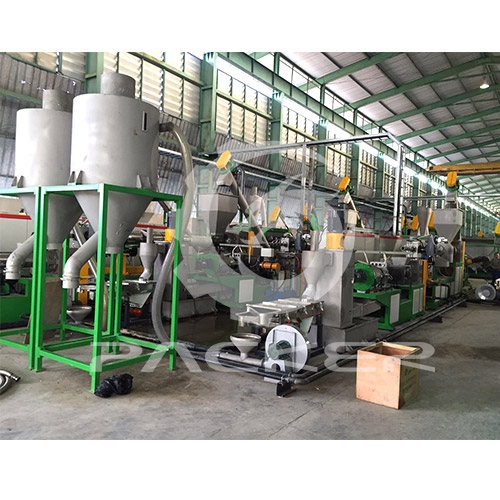Here are the key components and stages typically found in a plastic granulating line
2023-12-27
A plastic granulating line, also known as a plastic pelletizing line, is an industrial system designed for processing plastic waste or raw plastic materials into small, uniform-sized pellets or granules. The granulation process is a key step in plastic recycling, enabling the transformation of plastic waste into a valuable and usable form that can be used as raw material in the production of new plastic products. Here are the key components and stages typically found in a plastic granulating line:
1. Feeding System:
- Material Infeed: Plastic waste or raw plastic materials are introduced into the granulating line through a feeding system. This can involve manual loading, conveyor belts, or other material handling methods.
2. Shredding or Cutting:
- Size Reduction: The plastic material is shredded or cut into smaller pieces to facilitate further processing. This step is crucial for increasing the surface area of the material and preparing it for granulation.
3. Metal Detection and Removal:
- Metal Separator: A metal detector and separator are often employed to identify and remove metal contaminants from the shredded plastic. This is important to protect downstream equipment and ensure the quality of the final product.
4. Pre-Washing (Optional):
- Initial Cleaning: In some cases, a pre-washing step may be included to remove contaminants, dirt, or other impurities from the plastic material before granulation.
5. Granulation or Pelletizing:
- Extrusion Process: The plastic material is typically fed into an extruder, where it undergoes a melting and shaping process. The extruder forms the plastic into strands or strands that are then cut into small pellets or granules.
6. Cooling and Solidification:
- Water Cooling: The freshly extruded plastic pellets are cooled using water or air to solidify them. This step ensures that the pellets maintain their shape and size.
7. Separation and Classification:
- Vibrating Screens or Air Classifiers: The plastic pellets are separated based on size to ensure uniformity. This step helps achieve the desired granule size and quality.
8. Drying (Optional):
- Dehumidification or Air Drying: Depending on the type of plastic and the specific requirements, a drying step may be included to remove any residual moisture from the pellets.
9. Packaging and Storage:
- Bagging or Containerization: The final plastic granules are packaged into bags or containers for storage and transportation.
10. Quality Control:
- Inspection and Testing: Quality control measures may be implemented to ensure that the plastic granules meet the required specifications and standards.
11. Automation and Control System:
- Process Control: Modern plastic granulating lines often include automation and control systems to monitor and control the various stages of the process for efficiency and consistency.
Plastic granulating lines play a crucial role in the recycling industry, contributing to the circular economy by converting plastic waste into reusable raw materials. The specific design and features of a granulating line can vary based on the type of plastic being processed, the desired end product, and the capacity of the production line.



